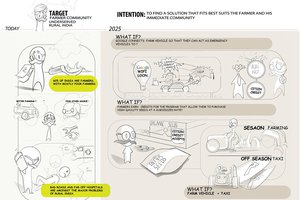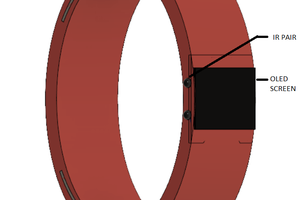The Central Principles of the HCORT Design are as follows:
1. The overall system design must be open source, open design and in the public domain in terms of all guideway definitions. Specifically, the guideway design itself, all interface definitions and the design of any component required by vehicles must be in the public domain.
2. Must include latched platooning on the main HCORT freeways (expressways). When vehicles platoon, the vehicles approach each other while traveling at or near the full speed of the freeway and gently touch on large bumpers and latch together. i.e. clamp, clasp, attach or otherwise fasten together. The electronically controlled latch can be controlled by either vehicle. Reasons for adding this latch are as follows:
- We currently have a history of major projects that failed due to or related to platooning. These problems included authorities not accepting the concept of platooning as a safe way to travel, and problems getting platooning to work reliably due to the vehicles bumping into each other.
- We have a history of good safety with having vehicles latched together as trains or trailers. Therefore, with only a very small period of time when any distance between vehicles exists, the overall journey will be safer than having distance between vehicles throughout the journey.
3. Vehicles must be based on four wheels with rubber tyres. These will probably be pneumatic although there are other alternatives. Reasons for rubber tyres are:
- Allows Dual Mode. That is, allows vehicles to also run on normal roads.
- Ability to use standard automobile technology for suspension, wheels, brakes, steering, shock absorbers etc.
- Reduces Intellectual Property problems. Cities don't want to run on a road or rail system where some private company owns rights to it.
- Able to stop and start quickly
- Quiet
- Good ability to handle steep grades
- Vastly superior cost per capabilities.
- Large range of vehicles already developed.
4. Initially, projects creating or designing HCORT systems should not design or create any vehicles in total for the system. Rather, the design or creation should be that of kits that allow modification of standard electric cars.
- Electric car technology is advancing too quickly for systems designed for large networks to keep up with. Large new networks like these will have a slow implementation or uptake.
- There is a large range of types of HCORT vehicles needed, both those described herein and others, and a generalized kit will be needed to allow all of these to be created.
- Cars originally designed for roads are a lot more sophisticated than specifically built vehicles, particularly in terms of safety features that the HCORT system should utilise. For example, cars are generally built with anti-locking brakes, stability controls and air bags and all of these would be used by the HCORT passenger vehicles.
- Designing specific vehicles are generally attempts to lock in the manufacturer as always being the supplier. This will limit the usefulness of the system.
Note: Once a major implementation occurs there will be a substantial number of vehicles purchased. With this purchasing power, there will be a large number of further modifications implemented such as taking away the steering wheel and other controls etc, adding an emergency exit, particularly to the front of the vehicle etc.
5. Solid bumper bars with latching will be developed as part of the kit used to convert electric cars to HCORT vehicles. These are currently envisaged as being like 1980s style Volvo bumper bars. The bumper bars will include shock absorbers (i.e. damping which insures that there is little spring rebound). Many of the various sensors will be incorporated in the bumper bars. Use of these bumper bars is expected to aid in independent modular component design as it allows a design which includes mechanical aspects to be created as one larger module incorporating a number of the smaller modules used to make the vehicle design. It could be designed with lightweight...
Read more »
 Anteneh Gashaw
Anteneh Gashaw
 Rajshekhar Dass
Rajshekhar Dass
 Owen Trueblood
Owen Trueblood
 Chirag Mahaveer Parmar
Chirag Mahaveer Parmar